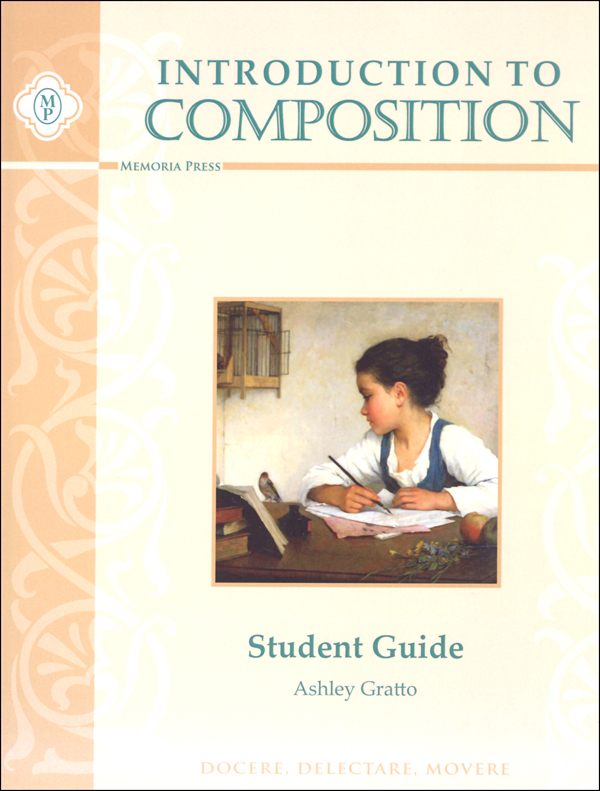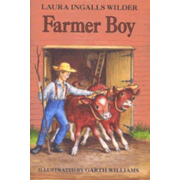Introduction to Composition is a year-long writing course intended for third grade level, although it might also be used at fourth grade level. The course follows classical methodology as students do copywork and dictation, but the course is much more interesting since it incorporates excerpts from three novels: Farmer Boy, Charlotte’s Web, and The Moffats. (Guides for these same three books along with the novels are used as part of Memoria’s complete third grade curriculum, which makes it convenient if you want to do fuller study of the novels.)
Each lesson begins with the teacher reading aloud or the student reading independently an excerpt from one of the books. Excerpts range from two to six pages rather than just a paragraph or two. You will need the novels themselves since the passages are not reprinted in Introduction to Composition.
After the reading, the teacher guides the student or students through a series of five discussion questions that are visible in both the student guide and teacher key. The purpose of these “Guided Questions” is to help students grasp the events of the passage in preparation for writing a summary of it.
After the discussion, the teacher asks students to present an oral, three-sentence summary of the passage. With more than one student you will get different summaries that will generate discussion. Nevertheless, with a single student, the teacher will ask questions and guide the student until he or she arrives at a reasonable summary. The student or students then dictate the three-sentence summary as the parent or teacher writes it on a board or other surface. Students then work with the parent or teacher to edit the summary, a good reason to work on a whiteboard or easily erasable surface. Once spelling, grammar, punctuation, and wording have been corrected, the summary should be rewritten if need be so that it is perfect. Students then copy the summary into their workbook. If the discussion and editing process takes too long, you might save the copywork for the next day.
The last part of each lesson is two sentences that are to be dictated to students to write in their book. The teaching instructions suggest presenting only one sentence per day.
There are 30 lessons in the book, and you should be completing one lesson per week. As you can see, the first day of each lesson will likely take much more time than other days, especially if the teacher reads the passage aloud as part of class time. The rest of the lesson can be completed in much shorter spans of time on two or three days.
The course has both a teacher key and a consumable student guide. Both books have a simple, one-page sheet of instructions at the beginning. The teacher key has student guide pages with suggested answers printed beneath each question, even though these questions will be used only for discussion. The “Student Summary” section in the teacher key has a sample summary. Dictation sentences appear only in the teacher key. Both books conclude with a rather humorous three pages of “instructions” on how to write a friendly letter that might have been written in a bygone era. While this is fun for adults to read, I doubt it will be of much interest to students.
Introduction to Composition draws on the classical education idea of helping students learn to write by helping them become familiar with models of excellent writing. It goes a step further as it helps students summarize reading passages, considering how they might summarize each one in only three sentences. This is an excellent exercise for developing reading comprehension and critical thinking skills.
The teacher or parent definitely needs to be an active part of the process. While students might read the passages independently, and perhaps even read and answer the questions on their own, almost all third and fourth graders will need assistance in summarizing the passage.
While I’ve described the intended use of the course, I can also see it as a valuable tool for older students to try to work through the lessons independently, albeit skipping the dictation sentences. Many older students would benefit greatly from the exercise of reading a passage, considering key points raised by the questions, then coming up with a summary without assistance. It doesn’t matter if the reading material is relatively easy; it’s still interesting.
Introduction to Composition should be easy for parents to use, and it shouldn’t require any prior lesson preparation. I like the design of this course so much that I hope Memoria Press will create a few more similar to it.












